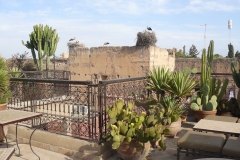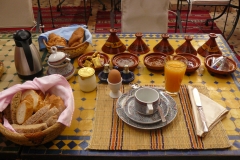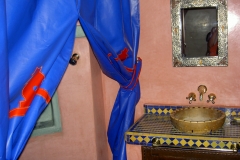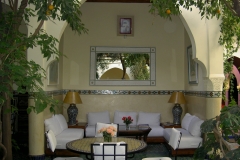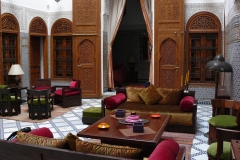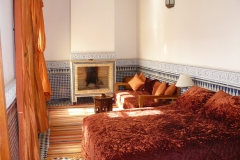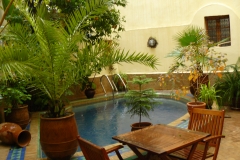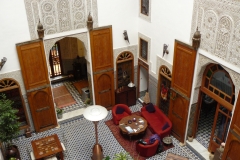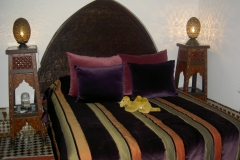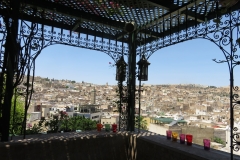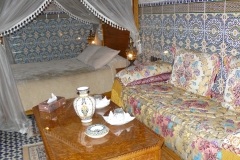Living in a Riad
A dwelling home in an Arabian medina looks outwardly fortified and closed and has no windows. But it has an open-planned courtyard in the center, where rooms are aligned. On the one hand because of the cool, on the other hand, to ensure privacy. In North Africa, Muslims found the ancient Roman atrium houses, which had an outside closure and adapted well for the Islamic desire for a protected family life. If the courtyard is a bit larger, and has vegetation, and perhaps even a pool, then the house is called a Riad. If the house has only a paved patio, perhaps with a fountain, then it is called a Dar. These centuries-old Riads and Dars were not all the same. The simple family house had a small open courtyard in the middle, with perhaps a fountain for coolness, with galleries with access to individual rooms, located on two to three floors, with a salon on the ground floor. The house would then be completed with a roof terrace, which would be used in hot months for sleeping. Well-to-do families had real palaces! Their houses would have large gardens in the courtyard, with trees bordering it, along with numerous fragrant flowers. Many would also have a swimming pool. Individual bedrooms were beautifully decorated in the Moorish style, with painted wooden ceilings and tiled walls. Individual bedrooms had no private bathroom. However, there was a private hammam inside the house.
These Riads have been, in recent decades, increasingly purchased by Europeans, who restore and update them, and then turn them into comfortable guest houses. Just in Marrakech today, there are over 1000 Riads that are rented for overnight stays, with each having a unique touch and charm of its own. These houses are generally small, they usually have three to eight guest rooms, and many times adjacent Riads have been converted into one large house. The most difficult challenge, when renovating and refurbishing, is to provide each bedroom with a private bath! This luxury was not originally included! Other challenges in remodeling, especially if a Riad, where the original tiles were well preserved, was to remodel without destroying these beautiful wall tiles.
A Riad is always in a city, but in the country there are very nice guesthouses (Auberge) with personal services offered. Individual travelers usually prefer the impressive Riads or Auberges. If in a larger group, travelers need to choose hotels, as the smaller capacity of the cozy houses does not allow room for a comfortable group stay.

